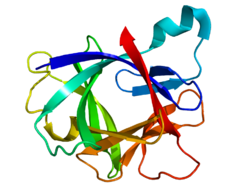I grew up in Oregon but have not visited since 2010. T and I went out there for two weeks after I graduated college as his gift to me. It was a really nice visit, even though we had to see family that I didn’t much care to see.
I’m sure Uncle Jim doesn’t realize how harmful his words were that Thanksgiving he brought food over for my grandma but not for my sister and me. We missed turkey day at his place because I was throwing up. I wanted to stay home and sis wanted to stay home to take care of me. Grandma freaked out and, in a huff, decided we wouldn’t go at all.
There are so many reasons I don’t talk to most of my family.
Anyway, I really haven’t had a reason to be back, seeing as I couldn’t make my ten-year reunion earlier this year. I have had a few friends I wanted to visit, but not enough to spend money on a ticket just for that when I’m not working.
You can read more about why I was there over on Chronic Sex. I’m sensitive to the fact that not everyone is interested in my adventures as a budding sex educator and icon (not my words).
One thing that has come about in Oregon is the legalization of marijuana for recreational use.
One thing I had never tried, despite growing up in Oregon? Pot.
I visited a dispensary whose website was really focused on helping those of us dealing with pain in addition to the average consumer. When I told the gal I had no idea what I was doing there – and explained – she really took to educating me a lot about pot and the various products there are for pain relief.
I picked up a salve – which I threw out because it smelled a lot danker than the test model in the store – and some edibles. Edibles are when pot has been put into another item like candy or brownies.
When I was sure that I was done traveling around for the night, I ordered some pizza and popped an edible.
The only effect I really noticed was feeling loose and maybe a little giggly. Mostly, though, I was tired and probably should have tried this not at my internal clock’s midnight.
Enjoying the soft sheets was definitely a highlight, too. I live-tweeted a bit of this first try which was fun.
I did have a nightmare that felt very real. However, the way I handled it was much differently than I have sober. I woke up, texted T (who I knew was likely still asleep), and then snuggled back down and went back to sleep.
I didn’t stay up crying or freaking out at all.
The next night, I set up a lot earlier for my foray into pot. I made some food, worked on packing a little bit, and continued my habit of watching Adult Swim.
Last night, I slept like a goddamned baby. I got the longest uninterrupted sleep I have had in a very long time. I was comfortable, cozy, and enjoying texting my loved ones positive and affirming things.
I felt very grounded, very sure of myself, and very present. I also felt like I was owning some of the positive things my friends have said about me and the work I do. I really began to feel like I was important and that it was okay to accept these compliments.
That’s not something that I’ve really been able to do before this trip.
My body slowly became comfortably numb. The few pains I had dissipated. My body felt loose in a positive way.
I really didn’t feel any mind-altering stuff at all.
This is because of the kind of edible I got. It had 5 parts CBD to 3 parts THC. For those of you unfamiliar with pot-lingo, THC is what gets you high. CBD, though, doesn’t; it decreases anxiety and short-term memory issues – along with having amazing pain-relief benefits. It’s known to have anti-inflammatory properties, too.
I consumed something much more medicinal than recreational, though it was available without a medical card – which still is a thing you need for some of the stronger stuff.
So, what’s my verdict?
It’s hard to give a full verdict when I have been having less pain lately, etc. I recognize that I cannot necessarily say exactly how much pain was relieved through my using pot two nights in a row.
I did get a little sick to my stomach, having to visit the bathroom a bit more often. The second night, I really got hit hard with that pot taste in my edible and nearly threw up because of it.
I had fewer side effects with pot than I have had with opiates. I was less high with pot than with opiates.
If people want to look at cracking down on opiates for chronic pain, they need to begin offering us an alternative. Frankly, pot seems like it could be one for some of us. Maybe someday, when Scott Walker is no longer in power in Wisconsin, they will join the states around them and – and the very least – allow us to have medical marijuana. If they do, I will probably be one of the first people to sign up.
Until then, I know that I will have ways to manage my pain when traveling to states like Oregon, Washington, and Colorado for conferences and more.
Is pot legal where you are, at least medically? Have you used it for pain relief? What did YOU think?
















